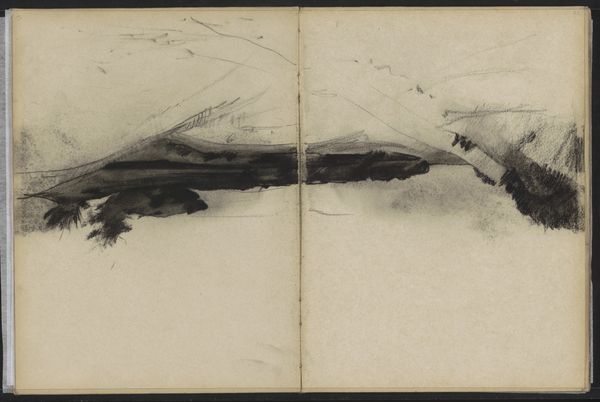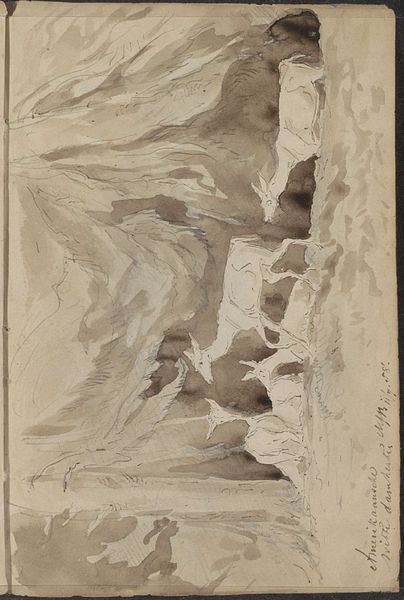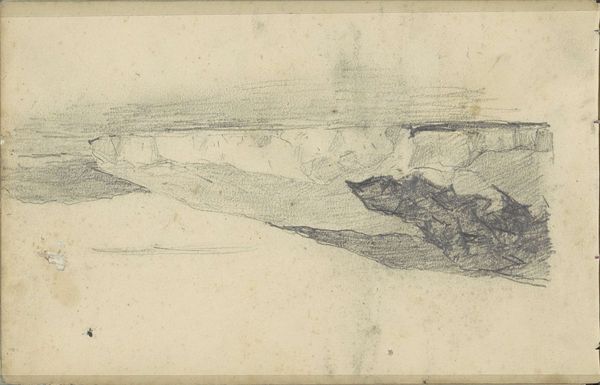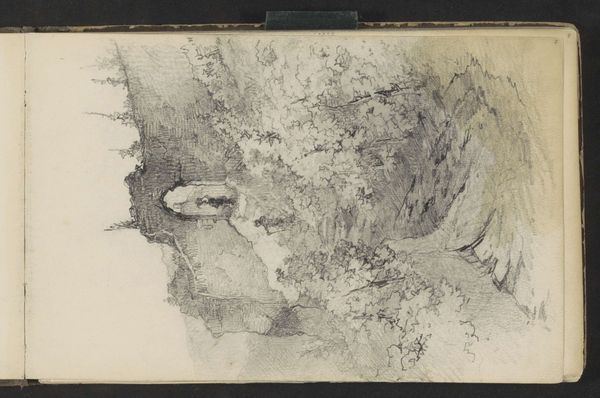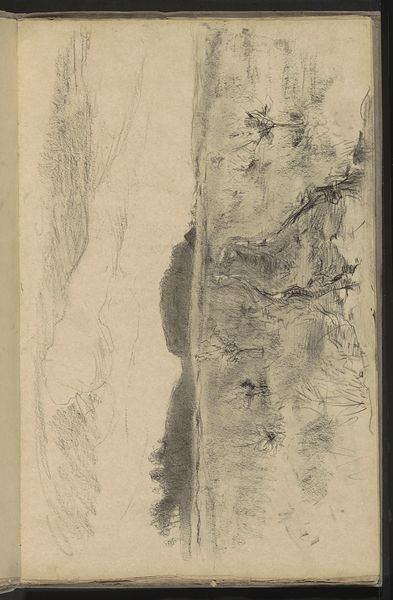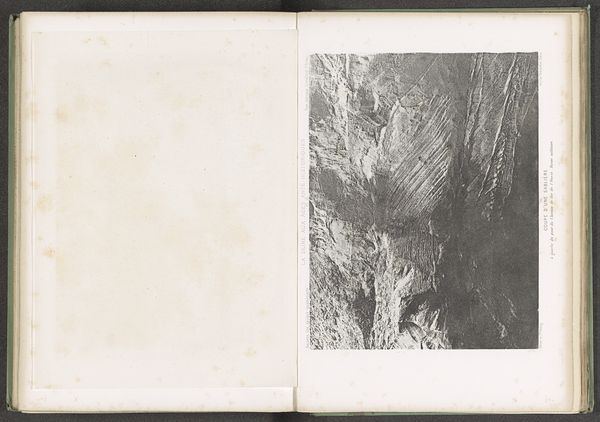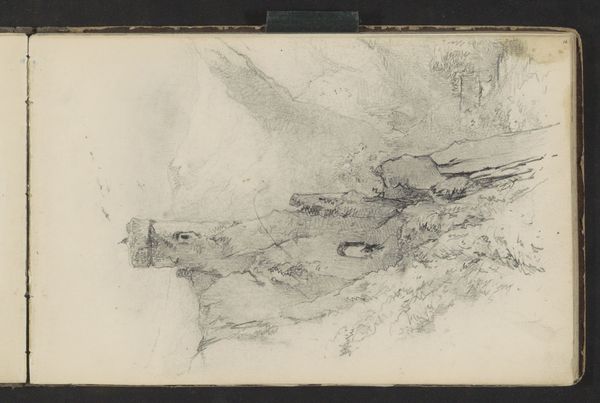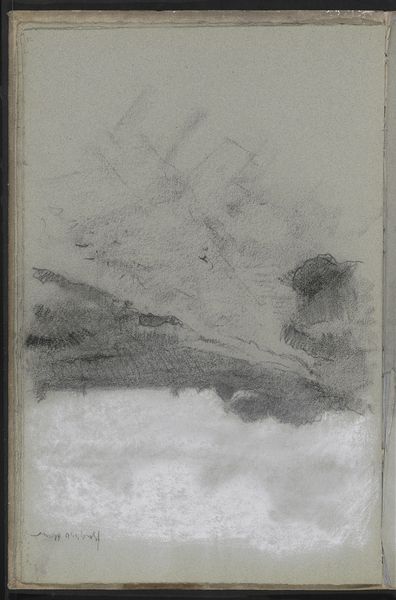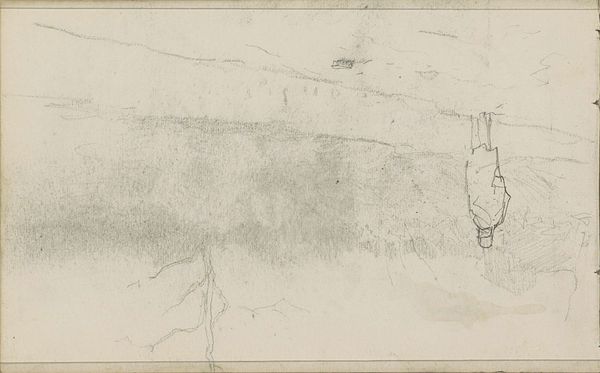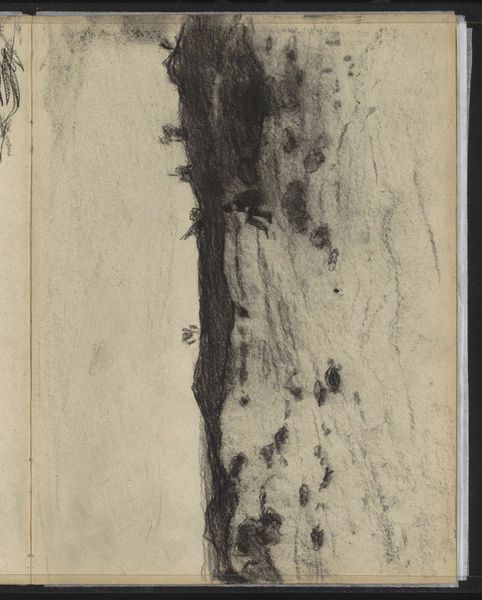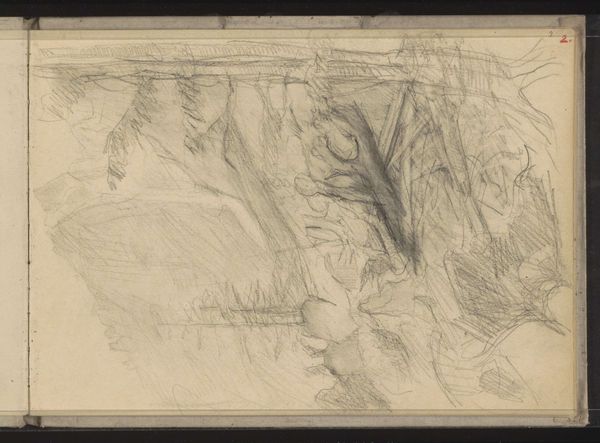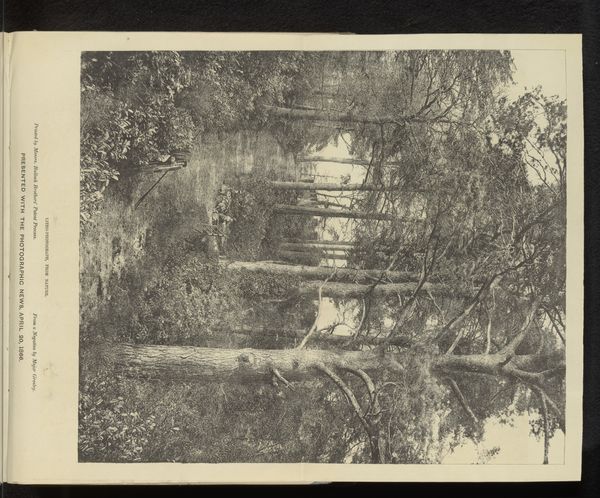
drawing, graphite
#
drawing
#
landscape
#
graphite
#
realism
Copyright: Rijks Museum: Open Domain
Editor: This drawing, "Zandlandschap," or "Sand Landscape," by Willem Witsen, was created with graphite around 1886-1891. It’s a relatively simple composition, but the stark contrast between the heavy, dark sky and the lighter sand evokes a feeling of vastness, maybe even a little melancholy. What draws your eye in this piece? Curator: Precisely that stark contrast you identified is quite compelling. Witsen uses the formal elements of value and line to create a dynamic, albeit subdued, composition. Observe how the dark, gestural marks denoting the sky are juxtaposed against the more delicately rendered lines describing the land. The density and weight of the graphite are meticulously manipulated to build a pictorial tension between what is above and below. Editor: It’s interesting that you focus on the balance of light and dark. The lines are not distinct at all. Are you suggesting that even without defined shapes, it can still be impactful? Curator: Indeed. Shape, in its conventional sense, is less significant here. What is crucial is how Witsen constructs depth and mood through gradations of tone and the varied pressure of his mark-making. Consider, also, the horizontal division of the picture plane. Does this contribute to a sense of stillness, or something else? Editor: I guess it amplifies the feeling of spaciousness. There's an inherent flatness to the composition, almost like he's reducing the landscape to its most essential components. Curator: An astute observation. He avoids the illusionistic depth of academic painting. He flattens the perspective, emphasizing the materiality of the drawing itself, reminding us that we are looking at graphite on paper and, therefore, a conscious arrangement of graphic elements. Editor: I see. So it’s the raw application of the graphite, not the illusion it creates, that's most important. Thanks for illuminating that; I definitely look at it differently now. Curator: It is the beauty of this reductionist approach that allows us to appreciate the fundamental vocabulary of drawing. Analyzing art's formal aspects deepens our appreciation of its impact.
Comments
No comments
Be the first to comment and join the conversation on the ultimate creative platform.
